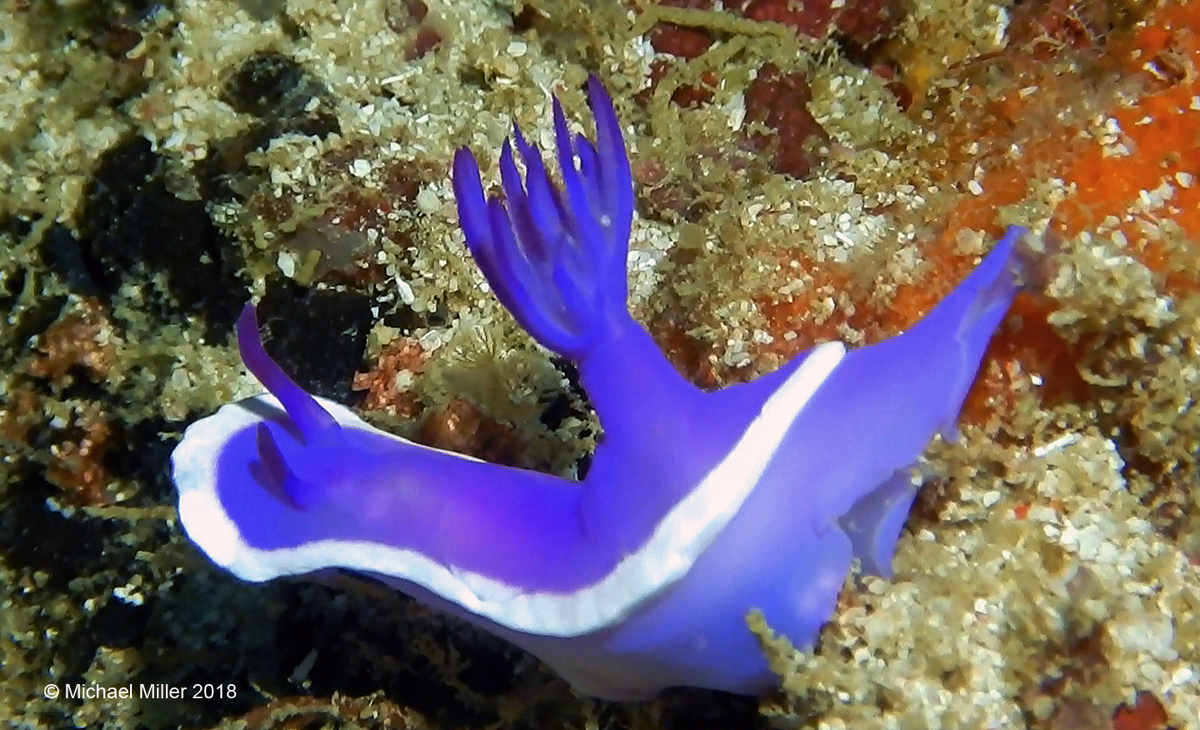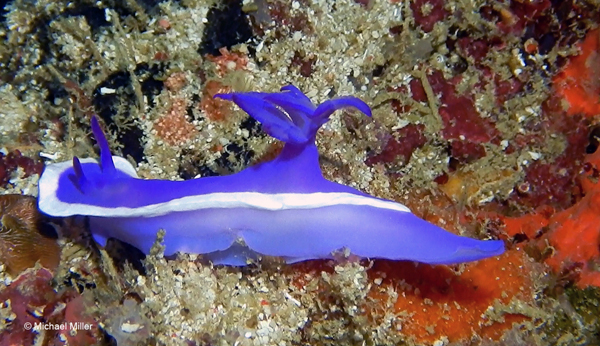 |
Hypselodoris violacea
Image courtesy of Michael Miller, WebmasterFreeze Frame of video taken last month at Sipadan Island, Malaysia
Nikon CoolPix AW 130
 |
Hypselodoris violacea Gosliner & R. Johnson in Epstein et al., 2018 This newly described species of Hypselodoris is known from the Philippines and Malaysia. It is one of more than a dozen new Hypselodoris' described in Epstein, H.; J Hallas; R. Johnson; A. Lopez & T.M. Gosliner, 2018. The body is deep violet-purple with a wide white marginal band. Michael's shots here are of a deep purple-blue specimen. The rhinophores and gill are the same as the body color. A similar species is described in this same paper. Hypselodoris variobranchia differs in that it has bright orange rhinophores. Looking forward to seeing more of the newly named critters in future BOW's. Reference: Epstein, H.; J Hallas; R. Johnson; A. Lopez & T.M. Gosliner. 2018. Reading between the lines: revealing cryptic species diversity and colour patterns in Hypselodoris nudibranchs (Mollusca: Heterobranchia: Chromodorididae). Zoological Journal of the Linnean Society, 2018, XX, 1-74. With 40 figures. |
Sammamish, WA 98074
Oct., 2018
Send Dave email at davidwbehrens@gmail.com

Attention all you Sluggers, and you know who you are! The NSSI 2nd edition is now available in ebook PDF form . The hard back version will become available Nov. 1st. Both will cost $65 (individually). You will need to jump through a few hoops to get the electronic version as pdf distribution is protected by Adobe ID!! Please read the following to enable reading your electronic purchase! This new 2nd Edition is updated and reorganized, including 185 new species. Among other features, the new edition includes additional photographs of species, an identification key, and an up-to-date classification reflecting the latest evolutionary relationships. The Indo-Pacific represents the largest expanse of tropical ocean in the world, stretching from the Indian Ocean coast of southern Africa and the Red Sea to the central Pacific of the Hawaiian Islands, Easter Island and the Marquesas. This region supports the most diverse marine fauna of any place in the world for most groups of marine organisms. The nudibranchs and sea slugs are no exception to this rule; there are about 3,000 described species of these organisms in the world and at least 40% of these have been found exclusively in the Indo-Pacific tropics. This book illustrates 2,138 Indo-Pacific nudibranchs and sea slugs, including many undescribed species.
|

|
